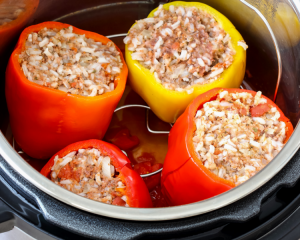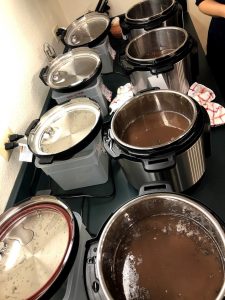 Many people received an electric pressure cooker over the holidays this year or last. Are you struggling to learn how to use it? If you live in one of Colorado’s many high altitude communities you may have had mixed results with your cooker when following the manufacturer’s instructions.
Many people received an electric pressure cooker over the holidays this year or last. Are you struggling to learn how to use it? If you live in one of Colorado’s many high altitude communities you may have had mixed results with your cooker when following the manufacturer’s instructions.
I have heard reports from people, who after several less than tasty results, put them back in the cabinet or in time-out (the garage.) If this sounds like you, take it out again and tune up your skills with these tips.
Elevation Adjustments For Electric Pressure Cookers
CSU Extension Agents have been experimenting with electric pressure cookers at a variety of elevations to come up with some tips for use in Colorado.
When cooking rice and dry beans at elevations above 5,000 feet, you may need to increase:
- Cooking time by 20-35 %
- Liquid by 2-4 tablespoons per cup called for in the recipe
- Natural release time (5-10 minutes at a minimum)
 Additionally, when pressure cooking foods like rice and dry beans at higher elevations, allow for 5-10 minutes of natural release time, even if the directions call for a quick release. This extra time helps thoroughly hydrate and cook dry foods. It also helps avoid a potentially dangerous stream of liquid and foods escaping from the vent control knob. This most often happens when releasing pressure from high liquid foods such as soups.
Additionally, when pressure cooking foods like rice and dry beans at higher elevations, allow for 5-10 minutes of natural release time, even if the directions call for a quick release. This extra time helps thoroughly hydrate and cook dry foods. It also helps avoid a potentially dangerous stream of liquid and foods escaping from the vent control knob. This most often happens when releasing pressure from high liquid foods such as soups.
Testers did not find adjustments were needed for other foods. But adjustments may vary by make and model or your personal preferences. Such as how soft you like your vegetables.
We recommend you test any “new to you” recipe using the ingredients, functions and/or times listed during your first preparation of the food. Test meat, poultry, fish and eggs with a food thermometer, to be sure they have reached the recommended internal end temperature for safety. If the food is not at a safe temperature or you prefer it more tender, make sure there is at least 1/2 cup liquid in the pot, put the lid back on and cook it longer. Take notes on adjustments needed for the next time you prepare it or a similar recipe.
More Tips for Better Results:
- Read the owner’s manual before cooking. Manufactures write specific directions based on the make and model to ensure cooking is safe and enjoyable.
- Pressure-cook 2-4 cups of water to see how everything works before cooking food.
- Do not cook food with less than ½-cup liquid, unless the recipe calls for it. Some foods are
 naturally high in fluid, such as some fruits and vegetables.
naturally high in fluid, such as some fruits and vegetables. - Avoid overfilling the pot with food and/or liquid. There are two max fill lines on most inner pots. The lower (1/2 full) line is for foods that expand during cooking such as beans and rice. The higher (2/3 full) line is for foods such as meat that does not expand during cooking.

- Be sure to close the vent to ensure pressure can build during cooking. This is the most common mistake made by both newbies and veterans to electric pressure-cooking.
- Clean the floating valve, anti-block shield and sealing ring after each use.
- Don’t pressure can in a pressure cooker. Contact your local CSU Extension office if you are not sure what you have.
Electric Pressure Cooking Webinar
Consider attending a CSU Extension webinar coming to your area soon, called “Cooking Under Pressure”. At these webinars, you will learn how to operate an electric pressure cooker; more adjustments recommended for elevation and watch a demonstration of cooking in an electric pressure cooker.
Some webinars will also feature a style of cooking, such as Mediterranean Style. This webinar will include demonstrations of pressure cooking tasty dishes that are part of the healthy Mediterranean Diet plan.


Good info and timely with holidays and seems like more and more are using pressure cookers.
Love all of the photos in this post that shows us more about this great appliance that can cook up so many delicious meals.